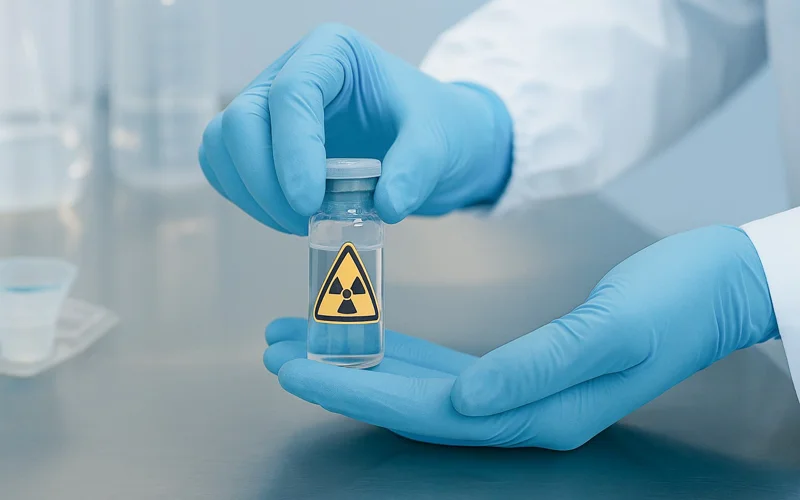Radioactive isotopes power a new era in cancer therapy
Scientists at the Oak Ridge National Laboratory in Tennessee, established in 1966, are developing one of the world’s most promising new weapons against cancer. Within its heavily shielded walls, technicians extract microscopic amounts of actinium-225 (Ac-225), a rare radioactive isotope derived from thorium-229, known among researchers as “thorium cows,” reports a Kazinform News Agency correspondent.

This substance lies at the heart of a new generation of radiopharmaceuticals—drugs that combine radioactive isotopes with molecular compounds capable of delivering them precisely to tumor cells, destroying malignant tissue while minimizing damage to healthy organs.
According to experts, this long-awaited scientific breakthrough marks a turning point in nuclear medicine. “It’s a very exciting time for nuclear medicine,” said Heather Jacene, Clinical Director of Nuclear Medicine at Harvard University’s Dana-Farber Cancer Institute.
The renewed global interest in radiopharmaceuticals follows the clinical and commercial success of Novartis’s Lutathera and Pluvicto, drugs based on the isotope lutetium-177. Used to treat gastrointestinal and prostate cancers, they have demonstrated strong therapeutic effects and reached combined sales of nearly two billion dollars last year.
“That’s what opened everyone’s eyes and said there is something there,” noted David Cade, Chief Medical Officer at Telix Pharmaceuticals.
While earlier medicines relied on beta-emitting isotopes such as lutetium-177, researchers are now focusing on a more powerful class of substances—alpha emitters such as actinium-225—that release their energy over microscopic distances. These particles can cut through cancer cell DNA with extreme precision, potentially increasing the effectiveness of treatment.
“Alpha emitters are like Mack trucks,” explained Thomas Hope, radiation oncologist at the University of California, San Francisco. “They deliver a focused punch that may be more lethal to cancer cells.”
One of the most advanced experimental drugs of this kind, RYZ101, was developed by RayzeBio, now part of Bristol Myers Squibb. The new therapy attaches Ac-225 to the same targeting complex used in Lutathera, and early trials show that patients who no longer respond to existing treatments tolerate RYZ101 well. “There is a lot of optimism and potential here,” Hope emphasized.
Actinium shortage challenge
Despite the encouraging results, scientists and industry representatives warn that the world still faces an acute shortage of actinium-225. The entire annual output at Oak Ridge—currently the largest global source—amounts to less than a grain of sand, enough for only a few hundred patients.
“There’s a big gap to bridge,” said Roy Copping, who manages the radioisotope program at Oak Ridge. To address this challenge, several U.S. companies are investing in new production methods.
The California-based firm Nusano and Wisconsin’s NorthStar Medical Radioisotopes are building next-generation accelerators to increase isotope output, while TerraPower Isotopes, a company backed by Bill Gates, is extracting actinium-225 from decades-old thorium stockpiles.
Industry analysts estimate that by 2030, as many as a dozen Ac-225-based therapies could receive regulatory approval.
“It will be a critical enabling technology for medical treatment moving forward,” said Jeff Jones, radiopharmaceutical analyst at Oppenheimer. As global research and investment continue to expand, radiopharmaceuticals are emerging as one of the most promising directions in oncology, offering new hope that future cancer therapies may target the disease at the atomic level.
Earlier, it was reported that researchers in Australia mapped human bone marrow at the molecular level, revealing previously unknown complexities in blood cancers that could pave the way for more effective treatments.
